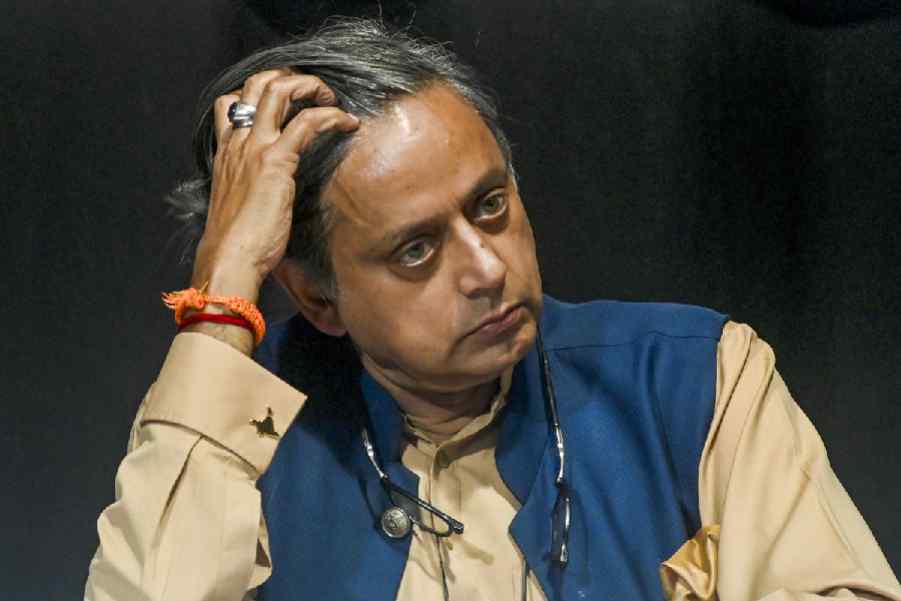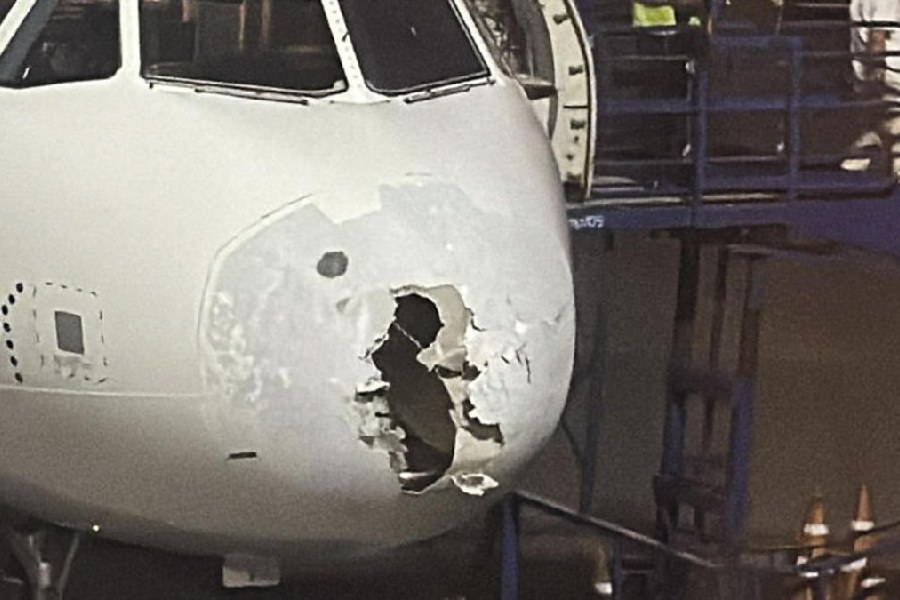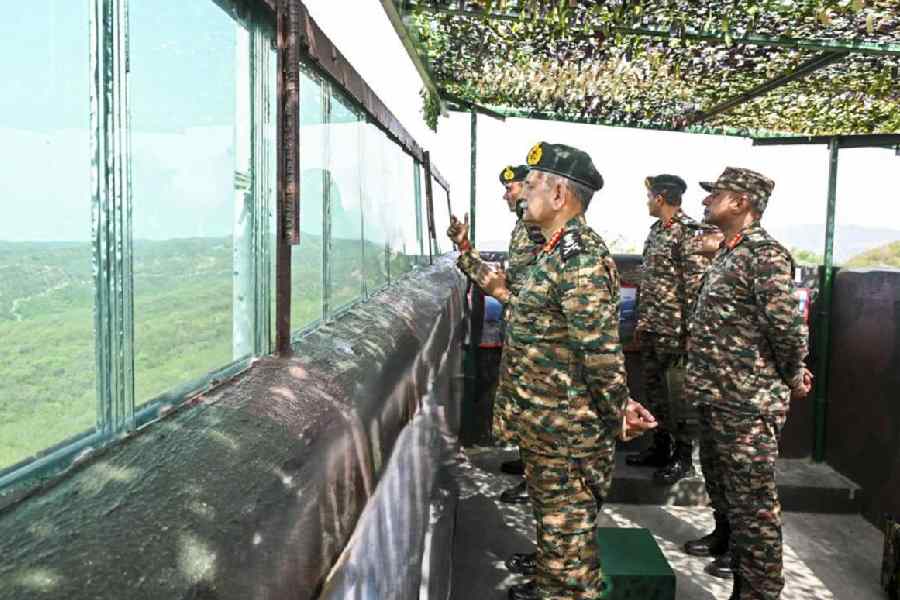 |
| A student monk looks at a collapsed hostel of the Enchey monastery, which was set up 369 years ago in 1642, near Gangtok on Monday. The hostel, one of the four such facilities, caved in on Sunday night after the earthquake. The monks have been evacuated. Faint cracks have appeared near the dome of the monastery. Picture by Prabin Khaling |
Gangtok, Sept. 19: The unofficial death toll has mounted to 39 in quake-ravaged Sikkim, outstripping the official count by ten, but the extent of the tragedy and destruction remains unfathomed amid snapped road, power and telecom links.
The worst-hit North Sikkim, the state’s largest and most beautiful district whose official toll of 19 dead includes two soldiers, is cut off from the rest of the state by landslides.
The district’s tourist hotspots such as Gurudongmar Lake, Lachung, Lachen and Yumthang Valley have been badly affected but this not being the peak season, only about 20 tourists are believed to be there. The army is said to be taking care of them.
Most of the estimated 5,000 tourists present in the state are in capital Gangtok, whose blockade by nature ended this afternoon when its lifeline, National Highway 31A, was cleared of a dozen-odd landslide-triggered breaches.
Knots of outstation students and tourists, looking to flee the state, waited on the roads this afternoon, desperately trying to thumb down the few vehicles that appeared.
“The extent of the damage is unprecedented. All state highways, district and village roads are extensively damaged,” government spokesperson K.S. Topgay said.
By night, power had been restored in most of Gangtok though the city was still grappling with a rare water shortage, thanks to a mudslip hitting its water treatment plant.
In Bengal, power returned by 2pm to Darjeeling, Siliguri and Jalpaiguri, the places hit the hardest along with Kalimpong, Kurseong and Balurghat. In her first visit to the hills as chief minister, Mamata Banerjee met grieving families and assessed the damage and relief efforts. She spoke of a possible trip tomorrow to Sikkim if the roads were cleared.
The strategic North Sikkim highway, the army’s route to border posts, stayed inaccessible beyond district headquarters Mangan tonight. What throws the high death count in North Sikkim into starker relief is that the Bhutia and Lepcha-dominated district is sparsely populated.
One fortunate circumstance is that the army and the Indo-Tibetan Border Police have a visible presence in the district, which borders the Tibet Autonomous Region. With places like Lachung and Lachen having very few hotels, many tourists actually stay at army and ITBP outposts.
The army said around 2,000 Sikkimese had taken shelter at its bases. “We have started 13 cookhouses,” 33 Corps commander Lt Gen. Vinod Bhatia said.
The two army jawans among the casualties died when boulders hit three army vehicles in Chatten, about 120km from Gangtok. Unconfirmed reports said a landslide had buried a bus carrying eight employees of power company Teesta Urja near Chungthang, where the company is developing a 12,000MW hydel project.
Lt Gen. Bhatia said many army buildings and “some bunkers in forward areas” had developed cracks.
The most populous district, East Sikkim, has the second-highest toll of seven.
Topgay said all schools and colleges were closed, 1,000-odd buildings had collapsed and over one lakh suffered damage. Chief minister Pawan Chamling was forced to shift his office temporarily from the damaged Tashiling secretariat to another Gangtok building, Samman Bhavan.
The state has announced a Rs 5-lakh death compensation, Rs 50,000 for serious injuries and Rs 25,000 for minor ones.
Hundreds of panicky people were out on Gangtok’s streets again, too afraid to spend the night indoors. Families armed with blankets, food and tea in flasks had gathered at the Paljor Stadium. MG Marg was crammed.











